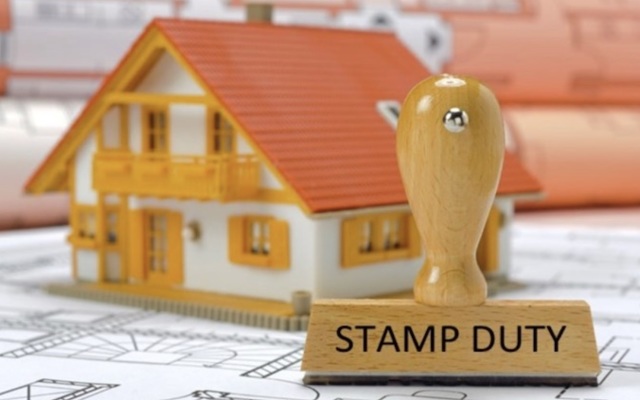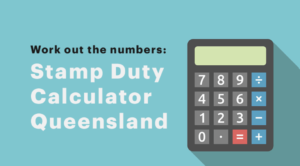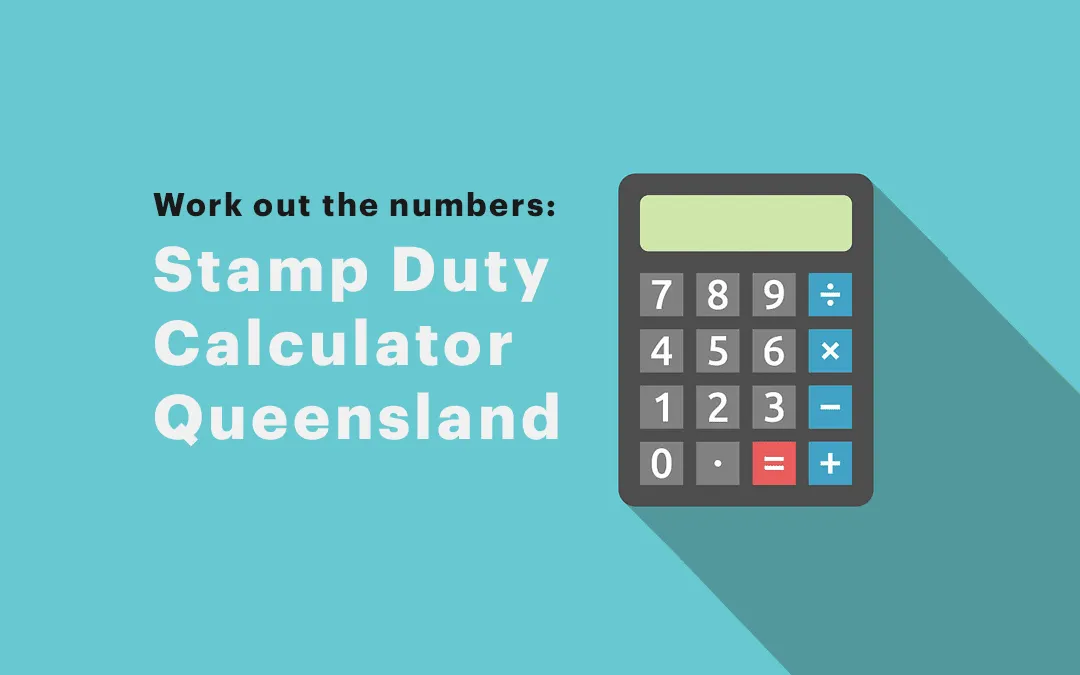
Stamp Duty: How Conveyancers Arrange Payment
Are you planning to buy or sell property? If so, you need to know about stamp duty and conveyancing. These terms may sound complicated, but they are essential for anyone involved in the property market. In this guide, we will explain what stamp duty is, how it works, and how conveyancers arrange payment and know how much to pay. We’ll also provide some tips on how to make the process as smooth and stress-free as possible.
• Stamp duty is a tax that must be paid when buying or transferring property.
• The amount of stamp duty payable depends on the value of the property and the state or territory in which it is located.
• Stamp duty must be paid within a certain timeframe after the sale or transfer of property.
• Conveyancing is the legal process of transferring property ownership from one person to another.
• Conveyancers are legal professionals who specialize in property law and can help with the conveyancing process.
• Conveyancers can calculate the amount of stamp duty payable and arrange payment on behalf of their clients.
Stamp Duty
Buying a property is a major milestone in anyone’s life. But it comes with its fair share of expenses, including stamp duty. Stamp duty is a tax imposed by the Australian government on property transactions, and it can add a significant amount to the overall cost of buying a property. In this article, we will delve into the nitty-gritty of stamp duty in Australia and provide an emotional insight into how it affects property buyers.
1.1 The Basics of Stamp Duty
In Australia, stamp duty is a tax levied by state and territory governments on the purchase of property or land. It is a one-time payment that is made by the buyer and is based on the purchase price of the property. The higher the purchase price, the higher the stamp duty payable.
The purpose of stamp duty is to raise revenue for the government and to deter speculative buying and selling of property. But for buyers, it can add a significant financial burden to the already costly process of buying a property.
1.2 Who Pays Stamp Duty in Australia?
In Australia, the buyer is typically responsible for paying the stamp duty. However, there are some instances where the seller or vendor may be required to pay the stamp duty instead. For example, in Western Australia, the seller is responsible for paying the stamp duty on commercial properties.
It is also worth noting that stamp duty is only payable on properties that are being bought, rather than on properties that are being inherited or gifted.
1.3 What Types of Property Attract Stamp Duty in Australia?
In Australia, stamp duty is payable on most types of properties, including residential and commercial properties, as well as land. The amount of stamp duty payable will vary depending on the purchase price of the property and the location of the property. In some states and territories, there may be different rates of stamp duty payable depending on the type of property being purchased. For example, in New South Wales, there is a higher rate of stamp duty payable on second homes and investment properties.
1.4 How is Stamp Duty Calculated in Australia?
The way in which stamp duty is calculated in Australia varies depending on the state or territory in which the property is located. In general, stamp duty is calculated as a percentage of the purchase price of the property. However, there may be other factors that can affect the stamp duty payable, such as whether the buyer is a first-time buyer or whether the property is a new build.
It is important to research the stamp duty rates in your local area before buying a property, as this can significantly impact the overall cost of buying a property.

1.5 Stamp Duty Exemptions and Concessions in Australia
There are some situations where buyers in Australia may be eligible for stamp duty exemptions or concessions. For example, in some states and territories, first-time buyers may be eligible for a reduced rate of stamp duty, while in others, certain types of properties may be exempt from stamp duty. It is important to research whether you are eligible for any stamp duty exemptions or concessions before buying a property in Australia. This can significantly reduce the amount of stamp duty payable and make buying a property more affordable.
How Does Stamp Duty Work in Australia?
Buying a property is an exciting but stressful time for many Australians, and stamp duty is one of the many expenses that come with it. In this article, we will explore the ins and outs of how stamp duty works in Australia, including when it is paid, how it is paid, and the penalties for late payment.
2.1 When is Stamp Duty Paid in Australia?
In Australia, stamp duty is typically paid at the time of settlement, which is when the property ownership is transferred from the seller to the buyer. The exact time of payment may vary depending on the state or territory in which the property is located. It is important to note that stamp duty must be paid before the property can be transferred to the buyer. Failure to pay stamp duty on time can result in penalties and delays in the settlement process.
2.2 How is Stamp Duty Paid in Australia?
Stamp duty in Australia is typically paid by the buyer or their conveyancer, solicitor, or settlement agent. The payment is made to the state or territory revenue office, and the exact payment process may vary depending on the state or territory in which the property is located. In some cases, stamp duty may be able to be paid online, while in others, it may need to be paid in person. It is important to research the payment process in your local area before settling on a property.
2.3 Penalties for Late Payment of Stamp Duty in Australia
Late payment of stamp duty in Australia can result in penalties, including fines and interest charges. The exact penalties may vary depending on the state or territory in which the property is located, but they can be significant.
It is important to ensure that stamp duty is paid on time to avoid any penalties or delays in the settlement process. If you are having trouble paying stamp duty on time, it is important to contact the state or territory revenue office as soon as possible to discuss payment options.
The Connection Between Conveyancing and Stamp Duty in Australia
Buying or selling a property can be a complex and overwhelming process, and conveyancing is a crucial aspect that shouldn’t be overlooked. In this article, we will explore what conveyancing is, why it’s important, and how it relates to stamp duty in Australia.
3.1 What is Conveyancing?
Conveyancing refers to the legal process of transferring property ownership from the seller to the buyer. It involves various legal and administrative tasks, including property searches, title transfers, ensuring the correct documents are completed and contract reviews. Conveyancing can be a lengthy and complicated process, and it’s important to work with a qualified conveyancer or solicitor to ensure that the process is completed correctly.
3.2 Why is Conveyancing Important?
Conveyancing is important because it helps to ensure that the property transaction is legally binding and that both the buyer and the seller are protected. It also helps to ensure that there are no unexpected surprises or hidden costs during the buying or selling process. A qualified conveyancer or solicitor can help to guide you through the conveyancing process and provide you with the advice and support you need to make informed decisions about your property transaction.
3.3 How Does Conveyancing Relate to Stamp Duty?
Conveyancing and stamp duty are closely related in the property buying or selling process. Stamp duty is a tax that is imposed by state and territory governments on property transactions.
A conveyancer or solicitor can help you to calculate the amount of stamp duty you will need to pay on your property transaction and ensure that it is paid on time to avoid any penalties or delays in the settlement process.
Additionally, conveyancing involves the transfer of property ownership, which is necessary for stamp duty to be calculated and paid. Without conveyancing, stamp duty cannot be paid, and the property transaction cannot be completed.
How Conveyancers Help Arrange Payment for Property Transactions
Buying or selling a property can be a complex and stressful process, but with the help of a conveyancer, you can ensure that everything is done correctly and efficiently. In this article, we will explore what conveyancers do, when you need a conveyancer, how much they cost, and how to choose the right one for your needs.
4.1 What Does a Conveyancer Do?
A conveyancer is a licensed professional who specializes in property transactions. They help to ensure that the property transaction is legally binding and that all the necessary legal and administrative tasks are completed correctly. One of the main tasks that a conveyancer performs is arranging payment for the property transaction. This includes calculating the amount of stamp duty that needs to be paid, ensuring that the payment is made on time, and transferring the funds to the relevant parties.
4.2 When Do You Need a Conveyancer?
You will need a conveyancer whenever you are buying or selling a property. A conveyancer can help to guide you through the legal process and provide you with the advice and support you need to make informed decisions about your property transaction. If you are buying a property, a conveyancer can help you to ensure that the property is free from any encumbrances, such as mortgages or liens, and that the property title is transferred correctly.
If you are selling a property, a conveyancer can help you to prepare the necessary legal documents and ensure that the settlement process goes smoothly.
4.3 How Much Does a Conveyancer Cost?
The cost of a conveyancer can vary depending on a range of factors, including the complexity of the property transaction and the experience of the conveyancer. Typically, conveyancers charge a flat fee or an hourly rate, and the cost can range from a few hundred dollars to several thousand dollars. Choosing the cheapest conveyancer could cost you more in the end with additional charges, out of scope works or costly mistakes from inexperience.
While the cost of a conveyancer may seem high, it’s important to remember that they can help to ensure that the property transaction is completed correctly and efficiently, which can save you time, money, and stress in the long run.
4.4 Choosing a Conveyancer
Choosing the right conveyancer for your needs is crucial to ensuring that your property transaction goes smoothly. When choosing a conveyancer, it’s important to consider their experience, reputation, and communication skills and location. Some Conveyancers specialise only in Queensland, some only in Brisbane and some service all of Australia including Melbourne, Gold Coast, South Australia, Northern Territory etc.
You should also ask for quotes from several different conveyancers to compare their costs and services. Don’t be afraid to ask questions or raise any concerns you may have, as this can help to ensure that you are comfortable with the conveyancer you choose.

How Conveyancers Calculate and Verify Stamp Duty Amounts in Australia
5.1 How Conveyancers Calculate Stamp Duty
Conveyancers are legal professionals who specialize in property transactions. They are responsible for ensuring that all aspects of the property transaction comply with the law, including the payment of stamp duty. Here are some of the methods conveyancers use to calculate stamp duty:
a) Online Calculators
Most state and territory governments provide online stamp duty calculators that allow buyers to estimate their stamp duty liability. These calculators take into account the property’s purchase price, location, and other factors that may affect the stamp duty amount. Conveyancers use these calculators to provide their clients with an accurate estimate of the stamp duty they need to pay.
B) State Revenue Office Guidelines
Each state and territory has its own guidelines on how to calculate stamp duty. Conveyancers are familiar with these guidelines and use them to calculate the stamp duty payable by their clients. They also keep up to date with any changes in the guidelines that may affect the stamp duty amount.
c) Manual Calculation
In some cases, conveyancers may need to manually calculate the stamp duty amount. This may happen if the property transaction involves multiple properties or if there are other factors that may affect the stamp duty amount. In these cases, conveyancers will use the state revenue office guidelines to ensure that their calculation is accurate.
5.2 How Conveyancers Verify Stamp Duty Amounts
Once the stamp duty amount has been calculated, conveyancers need to verify its accuracy before submitting it to the state revenue office. Here are some of the methods conveyancers use to verify stamp duty amounts:
a) Online Verification
Most state and territory revenue offices provide online verification tools that allow conveyancers to check the accuracy of their stamp duty calculation. These tools use the same algorithms as the online calculators and ensure that the stamp duty amount is correct.
b) Manual Verification
In some cases, conveyancers may need to manually verify the stamp duty amount. This may happen if there are discrepancies in the property transaction or if the online verification tools are not available. In these cases, conveyancers will check their calculations against the state revenue office guidelines and ensure that all factors have been considered.
5.3 What Happens if the Stamp Duty Amount is Incorrect?
If the stamp duty amount is incorrect, it may cause delays in the property transaction or result in the buyer having to pay additional fees. In some cases, the buyer may also face legal consequences for underpaying stamp duty. Conveyancers are responsible for ensuring that the stamp duty amount is correct and will work to rectify any errors that may arise.
Tips for a Smooth Conveyancing Process
Buying or selling a property can be a stressful experience, and the conveyancing process can add to that stress. But with a little preparation and communication, you can make the process go more smoothly. In this article, we’ll share some tips to help you navigate the conveyancing process with ease.
1. Get Organized Early
The key to a smooth conveyancing process is to be organized. Start by gathering all the necessary documents, such as your identification, contract of sale, and mortgage paperwork. Make sure you have everything in order before you start the process. This will help to avoid delays and ensure that the conveyancing process runs smoothly.
2. Communicate with Your Conveyancer
Effective communication is essential in the conveyancing process. Your conveyancer is there to help you navigate the process and answer any questions you may have. Make sure to keep them informed of any changes or issues that may arise during the process. This will help to avoid misunderstandings and ensure that the conveyancing process runs smoothly.
3. Be Prepared for Delays
The conveyancing process can be time-consuming, and delays are not uncommon. It’s important to be prepared for delays and to be patient. Your conveyancer will keep you informed of any delays that may arise and work to resolve them as quickly as possible.
4. Understand Your Contract of Sale
Your contract of sale is a crucial document in the conveyancing process. It outlines the terms and conditions of the sale and sets out your obligations as the buyer or seller. Make sure you understand the contract of sale and ask your conveyancer to explain any terms or conditions that you’re unsure about.
5. Be Aware of Additional Costs
There may be additional costs associated with the conveyancing process, such as stamp duty, legal fees, and search fees. Make sure you’re aware of these costs upfront and budget accordingly. Your conveyancer can provide you with a breakdown of these costs and help you understand what you’re paying for.
FAQs about Stamp Duty and Conveyancing
We understand that the conveyancing process and stamp duty can be confusing, and you may have some questions. Here are some frequently asked questions to help clear things up:
1. What Happens if You Don’t Pay Stamp Duty?
If you don’t pay stamp duty, you may face penalties and fines. Your conveyancer will ensure that the correct amount of stamp duty is paid before settlement to avoid any issues.
2. What Happens if the Property is Transferred Without Paying Stamp Duty?
If the property is transferred without paying stamp duty, the new owner may be held liable for the unpaid stamp duty. This can lead to legal issues and financial penalties.
3. Can You Get a Refund on Stamp Duty?
In certain circumstances, you may be eligible for a refund on stamp duty. For example, if the sale falls through before settlement, or if you overpaid on stamp duty. Your conveyancer can provide you with more information on the refund process.
4. How Long Does the Conveyancing Process Take?
The length of the conveyancing process can vary depending on a range of factors, such as the complexity of the transaction and any issues that arise. Your conveyancer will keep you informed of any delays and work to ensure that the process is completed as quickly as possible.
5. Do You Need a Lawyer for Conveyancing?
While it’s not a legal requirement to hire a lawyer for conveyancing, it’s highly recommended. A conveyancer or lawyer can help to ensure that the process goes smoothly and that your interests are protected throughout the transaction.
Most improtantly, understanding your legal obligations when it comes to stamp duty is crucial to avoid costly mistakes. As we’ve discussed, the amount of stamp duty you pay can have a significant impact on your finances, and it’s important to ensure that the correct amount is paid to avoid penalties and legal issues. By working with an expert conveyancer who has a deep understanding of stamp duty regulations and requirements, you can feel confident that your transaction will be handled smoothly and efficiently. Their knowledge and expertise can help to ensure that you don’t fall foul of any legal requirements and that the process goes as smoothly as possible.
So, whether you’re buying or selling a property, take the time to understand your legal obligations when it comes to stamp duty. By doing so, you can avoid costly mistakes and ensure that your transaction is handled with care and expertise. Don’t hesitate to seek the guidance of a trusted conveyancer to help you navigate this complex area of law and ensure a successful outcome for all parties involved.





